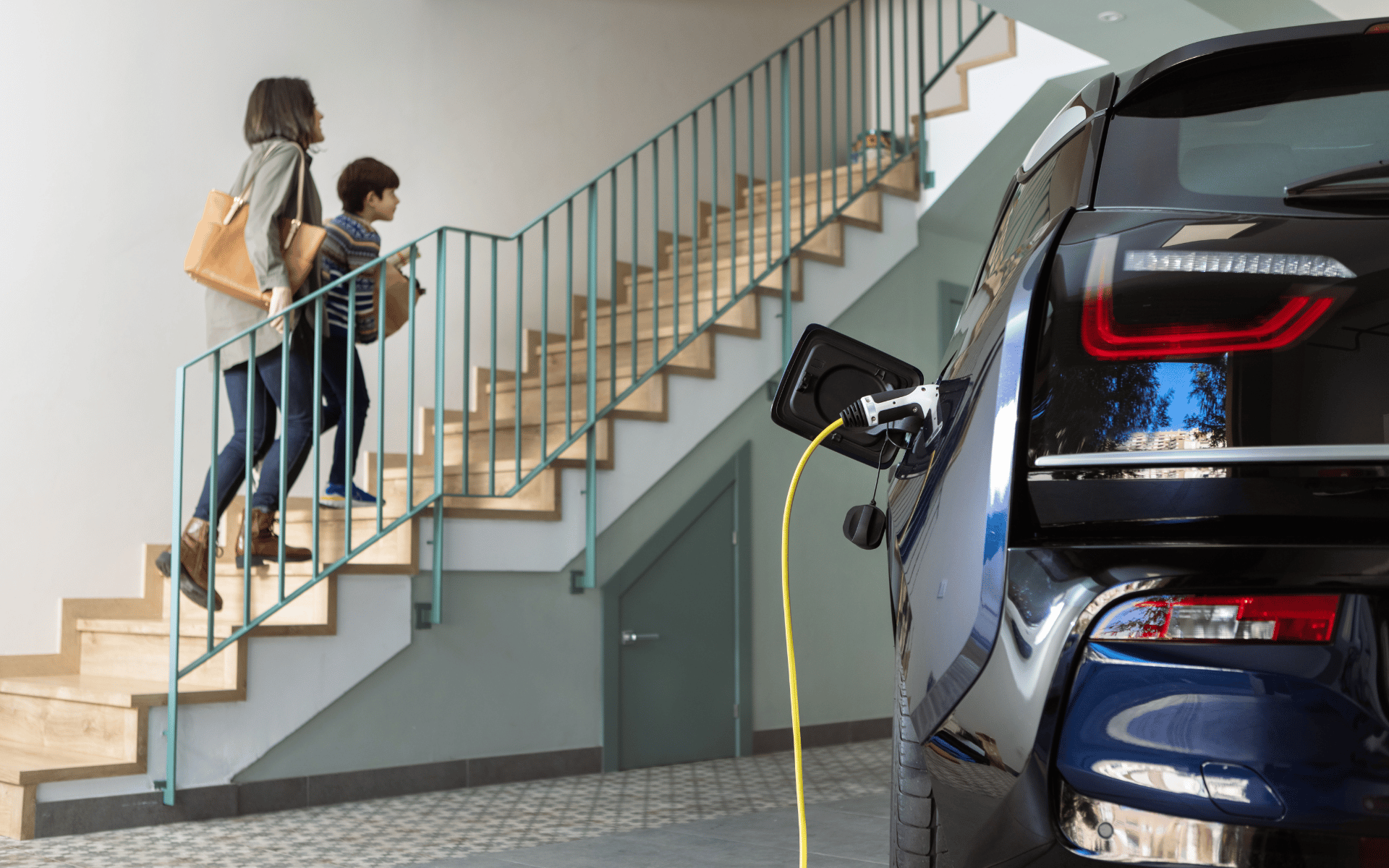Are EV Chargers Safe for My Home?

4 Min. Read
Driving an EV has many benefits, between reducing costs linked to gas and maintenance or reducing one’s environmental footprint, and more consumers are adopting EVs as a result.
Charging at home with a Level 2 charger is the most convenient solution for a majority of people. That said, there are some important considerations regarding EV charger safety for those contemplating an EV purchase or a Level 2 charger installation.
What are the main risks linked to EV chargers?
The installation of Level 2 chargers has become commonplace, with 85% of EV owners doing the majority of their charging at home. There are a few risks to consider, as with any other electrical system.
Fire hazards are the main risk associated with EV chargers. The risk isn’t higher than with any other electrical circuit, however, a fire can spread to the vehicle’s battery. Overall, while EVs have lower risks of catching fire compared to gas-powered vehicles, a fire can be difficult to control once it reaches the lithium-ion battery.
You can mitigate this risk by choosing a charger with quality components, relying on a professional for the installation, and performing maintenance as needed. You should also keep the charger and associated components off the ground. The National Electric Code calls for keeping indoor EV chargers 18” off the floor and 24” off the ground for outdoor installations.
If there is damage to your EV or you suspect any damage after a collision, don’t park it inside, and don’t charge it until a professional has inspected the battery.
Electrocution is the other main risk to consider. There are built-in features to mitigate this risk, however, you should always keep the charging cord off the ground and away from children.
EV charger features that enhance safety
EV chargers come with several features designed to reduce the risks of fire and electrocution:
Grounding. The 240V circuit you use to charge your EV needs grounding. This feature will redirect any power surge into the ground, away from the charger and vehicle.
Ground Monitor Interrupter. The Ground Monitor Interrupter or GMI is a system that performs a few tests to ensure the entire circuit is grounded before letting the current flow. This feature ensures that the electrical panel, charger, and vehicle are properly grounded at all times.
Weatherproof designs. You’ll need a charger rated for outdoor use with features that protect all the components from water and dirt for outdoor installation projects.
Smart splitters. If you already have a 240V circuit that is conveniently located in your garage, you may be able to use it to charge your EV by adding a smart splitter. These devices have built-in safety features, including a breaker and automatic power switch.
Safety features at the panel level
The electrical code has a few panel requirements your electrification project has to meet to ensure EV charger safety, depending on the amperage:
40 amps. Any EV chargers running on a 40-amp circuit will require a two-pole circuit breaker. The circuit breaker interrupts the current flow to prevent overcurrent and short circuits.
50+ amps. You’ll need a disconnect safety switch for chargers with a rating that exceeds 50 amps.
How your EV makes charging safer
EVs have built-in features designed to make charging safer, including a tightly sealed plug design that prevents any humidity or debris from getting inside the vehicle.
EVs also come equipped with a built-in charging management system. This smart feature regulates charging to prevent overcharging, among other things.
Once you plug in your EV to begin charging, this management system will communicate with the control box of the charger. The charging management system must establish this connection before any electrical flow will begin. This feature prevents any current from flowing through the charger until and unless there is an EV battery ready to receive it.
The charging management system also automatically adjusts the intensity of the current that flows from the charger. Most Level 2 chargers have the ability to adjust wattage output. The charging management system changes the power output and voltage based on the requirements of the EV battery.
The importance of a professional installation
There are several features designed to enhance EV charger safety at the panel, charger, and vehicle level. However, you need to hire a professional to make sure you get all these features.
A professional will design an installation project that meets all the national and local safety requirements stated in the electric code. They will also be able to pull any necessary permits and make recommendations regarding maintenance.
Qmerit offers safe EV charger installation services
Qmerit can take the stress out of Level 2 @Home charger installation with an unsurpassed network of certified installers across the U.S. and Canada. We put our electrical service contractors through a strict vetting process to ensure we are working with professionals dedicated to following the latest EV charger safety standards. We also offer a simple process to help you plan your EV charger installation process, starting with an online estimate. Contact us today to learn more!
